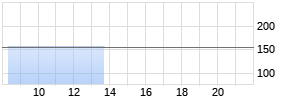
Work Uniforms: Say Hello to the Halo Effect
PR Newswire
WILMINGTON, Mass., May 14, 2014
WILMINGTON, Mass., May 14, 2014 /PRNewswire/ -- It's an everyday fact of life that many people tend to categorize others based on their appearance. For example, someone wearing glasses is often perceived as being smarter. Someone wearing a suit can be viewed as fashionable. Someone wearing jeans may be labeled as laid back.

For better or for worse, the perceived link between appearance and positive public perceptions is what social scientists refer to as the "halo effect," says Adam Soreff, Director of Marketing for UniFirst (www.unifirst.com), a leading provider of work uniforms, corporate attire, and facility service products to businesses throughout the U.S. and Canada.
"Basically, the 'halo effect' refers to when people judge others in a positive overall manner based entirely on a single, observed attribute," Soreff says. "It's what researchers refer to as having a positive cognitive bias. In the world of work apparel, for example, studies have shown that consumers overwhelmingly view employees who wear personalized company uniforms as being more professional, knowledgeable, and reliable than their non-uniformed counterparts. As a result, customers are more likely to do business with them."
The term "halo effect" was first coined during the early 20th century by Edward Thorndike, a psychologist who used it to describe the way commanding officers perceived the overall abilities of their soldiers based upon a single positive trait. For example, in his studies, Thorndike found that favorable impressions of a soldier's physical appearance and uniform produced higher ratings for perceived "dependability."
Thorndike chose the term "halo effect" after noting how people assume that saints depicted in Renaissance era paintings with glowing haloes over their heads must have been "good" in every manner during their lives. (Conversely, alluding to Thorndike's studies, other behavioral researchers refer to such biases, when negative, as the "devil effect.")
The existence of the "halo effect" with respect to work uniforms was also demonstrated in a study conducted by J.D. Powers and Associates for the textile services industry. Among the study's many results, it revealed that consumers perceive employees who wear personalized work uniforms as wearing "halos" -- that is, that they take greater pride in their work and are, therefore, more capable of providing better products and services.
In today's highly competitive business world, Soreff says, incorporating what we know about the "halo effect" can be quite useful for any success-minded company. "A managed uniform program can really make the difference with public perception, and the difference between someone becoming your customer or a competitor's."
About UniFirst
UniFirst (NYSE: UNF), a North American leader in the supply and servicing of uniforms, workwear, and protective clothing, outfits more than 1.5 million workers each business day. The company's most popular brands include UniWeave®, SofTwill®, UniWear®, and Armorex FR®. UniFirst also offers Facility Service program, including floor mats, mops, and restroom products. For more information, contact UniFirst at 800-455-7654 or visit www.unifirst.com.
Photo - http://photos.prnewswire.com/prnh/20140514/87488
SOURCE UniFirst Corporation

Mehr Nachrichten zur UniFirst Aktie kostenlos abonnieren
(Mit der Bestellung akzeptierst du die Datenschutzhinweise)

Hinweis: ARIVA.DE veröffentlicht in dieser Rubrik Analysen, Kolumnen und Nachrichten aus verschiedenen Quellen. Die ARIVA.DE AG ist nicht verantwortlich für Inhalte, die erkennbar von Dritten in den „News“-Bereich dieser Webseite eingestellt worden sind, und macht sich diese nicht zu Eigen. Diese Inhalte sind insbesondere durch eine entsprechende „von“-Kennzeichnung unterhalb der Artikelüberschrift und/oder durch den Link „Um den vollständigen Artikel zu lesen, klicken Sie bitte hier.“ erkennbar; verantwortlich für diese Inhalte ist allein der genannte Dritte.




